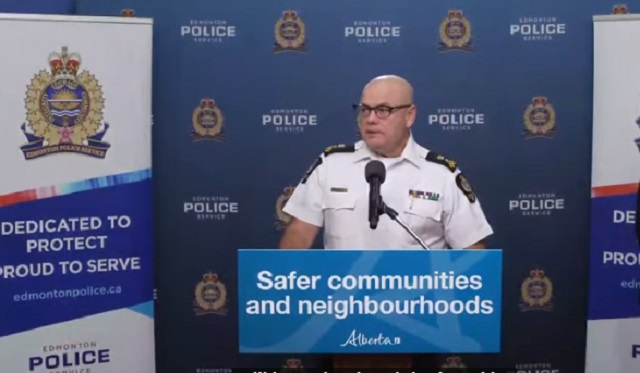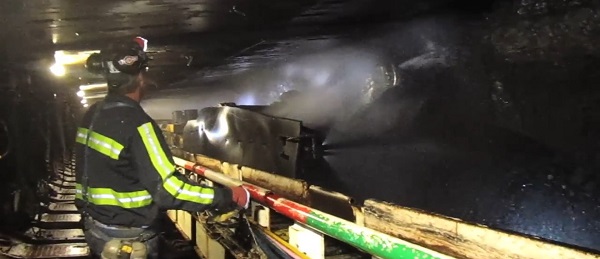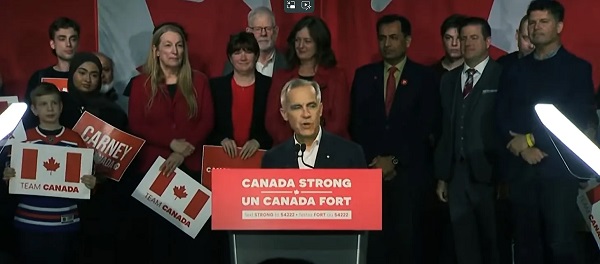Alberta
Province funding 50 more Edmonton Police Service Officers to tackle high crime areas

Safer streets for Edmonton
Alberta’s government is fighting rising crime in Edmonton with an $8.3-million investment to help hire 50 new police officers.
Edmontonians have a right to walk through their city streets or take public transit without fearing for their safety. Due to rising acts of violence, the government is taking direct action to keep Edmontonians safe.
By investing in the Edmonton Police Service (EPS) to support their efforts to recruit, train and deploy 50 new officers, high-crime areas like transit centres and the downtown core will see increased police presence.
“Our government will do whatever it takes to address the concerning escalating crime rates, particularly in vital areas like public transit and the downtown core where social disorder is prevalent. This funding will help strengthen the capabilities of law enforcement and make sure they have the necessary tools and personnel to improve public safety and fight criminals who continue to prey on vulnerable residents.”
The EPS is actively recruiting new members for this initiative. These additional officers will be strategically placed in high-crime areas with the flexibility to be redeployed to other parts of the city based on evolving needs. Provincial funding will help pay for police officer salaries and benefits and equipment needs like vehicles, uniforms, radios and body-worn cameras.
“These are much-needed resources, and though hiring and training will take time before officers hit city streets, we know their presence will accelerate our existing efforts. We have redeployed our front-line resources to places like transit and the downtown and have increased recruit class sizes to get ahead of service demands, and these additional officers are the next step in tackling Edmonton’s high-crime areas. We are grateful for the funding and support of the provincial government and look forward to the impact the officers will have on our streets.”
“Edmontonians have been loud and clear that safe public spaces are a priority. The funding and prioritization of transit centres and the core is an investment in our shared, long-term commitment to create a safe and vibrant city.”
“The Edmonton Police Commission has advocated for police funding necessary to address the myriad community safety issues facing our city, and we appreciate the provincial government making good on its commitment to fund 50 additional front-line officers. This investment will help support the police service’s long-term strategy of making our streets safer.”
“The DRC appreciates the collaborative effort the Edmonton Police Service and provincial government have put into addressing high-crime areas. We know from other cities that the presence of law enforcement and proactive policing increases the perception of safety and can even reduce incidents of crime and disorder. Through this funding, we look forward to seeing more police deployed throughout the core, working towards a safer, more vibrant and more connected downtown.”
The addition of new officers builds on several actions the government has already taken to improve public safety on Edmonton’s streets, including implementing a pilot project to team Alberta Sheriffs with EPS officers, adding more local positions to the Sheriffs’ Safer Communities and Neighbourhoods (SCAN) unit, and a $5-million grant to improve safety on the city’s transit network.
Quick facts
- Funding breakdown:
- $4.5 million for officer salaries and benefits
- $2.5 million for one-time costs like vehicles, uniforms, radios and workstations
- $850,000 for ongoing technology costs
- $500,000 for one-time recruitment expansion efforts
Related news
- Transit safety and violent crime: Enough is enough (Apr 4, 2023)
- More sheriffs in Calgary and Edmonton (Nov 24, 2023)
Alberta
Made in Alberta! Province makes it easier to support local products with Buy Local program

Show your Alberta side. Buy Local. |
When the going gets tough, Albertans stick together. That’s why Alberta’s government is launching a new campaign to benefit hard-working Albertans.
Global uncertainty is threatening the livelihoods of hard-working Alberta farmers, ranchers, processors and their families. The ‘Buy Local’ campaign, recently launched by Alberta’s government, encourages consumers to eat, drink and buy local to show our unified support for the province’s agriculture and food industry.
The government’s ‘Buy Local’ campaign encourages consumers to buy products from Alberta’s hard-working farmers, ranchers and food processors that produce safe, nutritious food for Albertans, Canadians and the world.
“It’s time to let these hard-working Albertans know we have their back. Now, more than ever, we need to shop local and buy made-in-Alberta products. The next time you are grocery shopping or go out for dinner or a drink with your friends or family, support local to demonstrate your Alberta pride. We are pleased tariffs don’t impact the ag industry right now and will keep advocating for our ag industry.”
Alberta’s government supports consumer choice. We are providing tools to help folks easily identify Alberta- and Canadian-made foods and products. Choosing local products keeps Albertans’ hard-earned dollars in our province. Whether it is farm-fresh vegetables, potatoes, honey, craft beer, frozen food or our world-renowned beef, Alberta has an abundance of fresh foods produced right on our doorstep.
Quick facts
- This summer, Albertans can support local at more than 150 farmers’ markets across the province and meet the folks who make, bake and grow our food.
- In March 2023, the Alberta government launched the ‘Made in Alberta’ voluntary food and beverage labelling program to support local agriculture and food sectors.
- Through direct connections with processors, the program has created the momentum to continue expanding consumer awareness about the ‘Made in Alberta’ label to help shoppers quickly identify foods and beverages produced in our province.
- Made in Alberta product catalogue website
Related information
Alberta
Province to expand services provided by Alberta Sheriffs: New policing option for municipalities

Expanding municipal police service options |
Proposed amendments would help ensure Alberta’s evolving public safety needs are met while also giving municipalities more options for local policing.
As first announced with the introduction of the Public Safety Statutes Amendment Act, 2024, Alberta’s government is considering creating a new independent agency police service to assume the police-like duties currently performed by Alberta Sheriffs. If passed, Bill 49 would lay additional groundwork for the new police service.
Proposed amendments to the Police Act recognize the unique challenges faced by different communities and seek to empower local governments to adopt strategies that effectively respond to their specific safety concerns, enhancing overall public safety across the province.
If passed, Bill 49 would specify that the new agency would be a Crown corporation with an independent board of directors to oversee its day-to-day operations. The new agency would be operationally independent from the government, consistent with all police services in Alberta. Unlike the Alberta Sheriffs, officers in the new police service would be directly employed by the police service rather than by the government.
“With this bill, we are taking the necessary steps to address the unique public safety concerns in communities across Alberta. As we work towards creating an independent agency police service, we are providing an essential component of Alberta’s police framework for years to come. Our aim is for the new agency is to ensure that Albertans are safe in their communities and receive the best possible service when they need it most.”
Additional amendments would allow municipalities to select the new agency as their local police service once it becomes fully operational and the necessary standards, capacity and frameworks are in place. Alberta’s government is committed to ensuring the new agency works collaboratively with all police services to meet the province’s evolving public safety needs and improve law enforcement response times, particularly in rural communities. While the RCMP would remain the official provincial police service, municipalities would have a new option for their local policing needs.
Once established, the agency would strengthen Alberta’s existing policing model and complement the province’s current police services, which include the RCMP, Indigenous police services and municipal police. It would help fill gaps and ensure law enforcement resources are deployed efficiently across the province.
Related information
-

 2025 Federal Election1 day ago
2025 Federal Election1 day agoRCMP Whistleblowers Accuse Members of Mark Carney’s Inner Circle of Security Breaches and Surveillance
-

 2025 Federal Election2 days ago
2025 Federal Election2 days agoMEI-Ipsos poll: 56 per cent of Canadians support increasing access to non-governmental healthcare providers
-

 2025 Federal Election2 days ago
2025 Federal Election2 days agoAI-Driven Election Interference from China, Russia, and Iran Expected, Canadian Security Officials Warn
-

 Health2 days ago
Health2 days agoTrump admin directs NIH to study ‘regret and detransition’ after chemical, surgical gender transitioning
-

 2025 Federal Election1 day ago
2025 Federal Election1 day agoBureau Exclusive: Chinese Election Interference Network Tied to Senate Breach Investigation
-

 Business6 hours ago
Business6 hours agoChina, Mexico, Canada Flagged in $1.4 Billion Fentanyl Trade by U.S. Financial Watchdog
-

 2025 Federal Election16 hours ago
2025 Federal Election16 hours agoTucker Carlson Interviews Maxime Bernier: Trump’s Tariffs, Mass Immigration, and the Oncoming Canadian Revolution
-

 Daily Caller4 hours ago
Daily Caller4 hours agoTrump Executive Orders ensure ‘Beautiful Clean’ Affordable Coal will continue to bolster US energy grid





